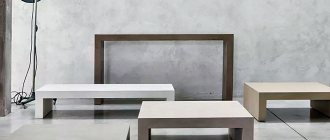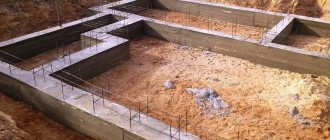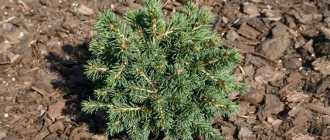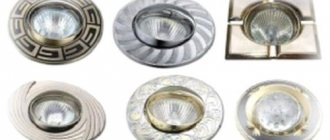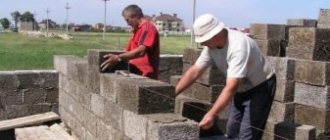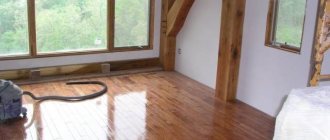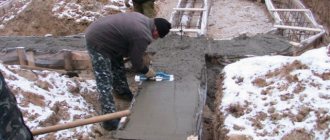Decorative floors are a unique group of floors. When we write about them, it seems as if we have described the types of paints for painting on canvas, because it is the skill, knowledge and experience of the artisan artist that creates such a material. And you will learn about what kind of image and what material you can get from this article!
Damian Kozlowski, owner of a construction company specializing in the creation of these amazing coatings, showed us the world of decorative flooring. Thank you!
Decorative floors or what?
Left: microcement, resin flooring and concrete flooring
The name decorative flooring refers to several materials where the common denominator is a unique pattern that is handcrafted on site.
This type of flooring can be made from a variety of materials, but in this article we will focus on four of them:
- Made from epoxy resin
- Made from polyurethane resin
- Concrete floors
- Microcement floors
As always, the difference lies in the details, the amount of work required to achieve the desired effect, and the price of materials. Therefore, we will discuss each of them in turn.
Review of impregnations from different manufacturers
Currently, manufacturers offer a huge range of concrete impregnations of various types. This section presents those that have gained a good reputation among builders and are very popular.
Strengthening primer for concrete floors Protector.
This composition strengthens the concrete surface, removes dust and improves the resistance of concrete to chemical reagents.
Impregnation Protector is used in the construction of concrete surfaces for a wide variety of purposes: floors, roads, pedestrian paths, runways. The composition is produced in containers of 20 liters. The cost of 1 liter is 180 rubles.
Strengthening impregnation Retroplate
It is used for dust removal and strengthening of low-quality concrete (less than M300), as well as old and new mosaic floors.
When working with this impregnation, the following nuances must be taken into account:
- impregnation cannot be used on uncured concrete (at least 14 days must pass after pouring);
- The composition is applied at an air temperature of at least +5 degrees.
The composition is produced in 20 liter buckets. The price of one liter is approximately 400 rubles.
Organic impregnation Protexil
Designed specifically for treating floors in industrial facilities. It perfectly protects the concrete floor from aggressive environments, high mechanical and transport loads.
Technical and operational characteristics of Protexil:
- penetration depth – 5-10 mm;
- material consumption – 0.3 liters per square meter;
- operating temperature range – from -40 to +80 degrees;
- drying time is up to six hours at a temperature of +20 degrees;
- the cost of impregnation is 170-190 rubles per liter.
Universal impregnation Monolit 20-M
This is a water-based composition, so it is environmentally friendly and non-flammable.
Impregnation acts on a concrete floor as follows:
- increases the water resistance of concrete by three grades;
- increases wear resistance and hardness by 30%;
- reduces concrete warping and the formation of shrinkage cracks;
- removes dust from concrete;
- improves concrete adhesion;
- increases resistance to organic acids and petroleum products.
The impregnation consumption of Monolith 20-M is one liter per 3-5 square meters (depending on the porosity and condition of the concrete). The price of one liter is 130 rubles.
Impregnation Aquastone
This impregnation provides dust removal and surface protection for concrete, mosaic floors and cement-sand screeds. It exhibits excellent penetration, providing high strength and hardness to the concrete surface. Recommended for use on both industrial and domestic floors. It can be applied to substrates with high humidity. The price of one liter is 220 rubles.
Impregnation Aquasol
Impregnation is a water-repellent composition and is used to protect any cement-based building materials from moisture and other harmful atmospheric influences. One liter of this impregnation costs 210 rubles.
Impregnation Epoxol
It is an epoxy water-dispersed composition and is used for strengthening, dust removal and protection of concrete and magnesium floors, cement screeds. It increases the compressive strength of concrete by 2-3 times and prevents the formation of cracks. Epoxol can be applied to wet concrete. Recommended for strengthening floors in warehouses, pharmaceutical and food industries, public and residential premises, medical and children's institutions. The price of one liter is 380 rubles.
Impregnation Ashford Formula
The impregnation is a water-based silicate polymer. Recommended for strengthening concrete surfaces of indoor and outdoor areas of logistics terminals, warehouses, production workshops, markets, shopping centers, garages, parking lots, runways and other facilities with increased transport and pedestrian load. The cost of one liter is approximately 110 rubles.
Decorative epoxy resin flooring
Resin flooring can be a uniform color or be stained to varying degrees with other colors to form a specific pattern.
Epoxy resin flooring is the most popular type of decorative flooring. However, due to their widespread use and variety of performance techniques, they are often greatly underappreciated and, due to their apparent ease of implementation, mistakenly considered too simple and cheap.
In theory, a can of resin is enough, but in practice you need much more to enjoy the most durable type of resin floor.
Epoxy floors allow for many color options. From floors of the same color to floors with "veins", colorful decorations, a metallic effect or even designs embedded in it, or even objects such as coins.
Properties of epoxy resin
Epoxy resin is the hardest material in the resin flooring group.
Also, like any polymer floor, it is a waterproof material , so you can safely use it in the bathroom and kitchen.
The epoxy resin itself has a natural glossy finish, but you can optionally coat it with varnish.
You can immerse in resin, plastic particles or anything else
The natural shine of the material in most areas can wear off over time, i.e. the shine in this place will be less.
Briefly about the main thing
By creating a rough foundation by pouring the floor with concrete mortar, it is possible to create a strong, durable, even surface. However, it does not have sufficient heat and sound insulation. Therefore, additional insulation is used during concreting.
The design of the rough base pie depends on the location of the concrete pour. For its production, a mixture of cement, fractionated sand and water is used. Typically, pouring is done with concrete grade M200. Its installation is carried out on reinforced concrete slabs or soil after installing waterproofing, installing insulation, reinforcing mesh and guides.
Ratings 0
Decorative polyurethane resin flooring
Polyurethane resin floor
The main difference between polyurethane and epoxy resin will be its hardness. Floors made of polyurethane resin are noticeably softer and more precise, they are elastic.
Due to its elasticity, unless you scratch the floor too much, those scratches can "seal" themselves, and the soft floor is very pleasant on bare feet.
Of course, there are many more differences, and these have to do with resistance to chemicals or very low temperatures. However, for home use they are not important.
Colors of polyurethane floors
You can choose any color
Floors of this type can be painted in any color from the RAL palette . You can also apply additional visual effects, but this will be on the surface of our floor. This allows you to create a textured floor using plastic particles scattered by hand on the floor.
Polyurethane resin flooring has superior UV resistance, making it perfect even in a very sunny living room, and you don't have to worry about discolouration.
Concrete floors
Expansion joints in concrete are visible lines.
For some it is a disadvantage, for others it is an excellent decoration - for concrete it is simply a technical requirement. Its popularity is growing, especially in the styles of minimalism, loft and modern.
Concrete floors can be made by pouring or putty and can be up to 30mm thick, but in practice no more than 10mm is used.
The color of a concrete floor depends on its manufacturer, while the final sample is given by the contractor.
It is worth remembering that concrete requires the use of expansion joints, that is, small gaps between large areas. There is also a peculiarity of the material, because without expansion joints, concrete can crack. However, expansion joints are designed to beautify our floor.
Terrazzo concrete floor (terazzo)
Once the floor is made , it must be securely fixed and then we give it a final gloss or matte finish.
Photo in the interior of a country house
The interior of a country house has more opportunities for realizing ideas. A simple fireplace with a concrete cladding will look gorgeous. The contrast of cold and hot will look impressive in the interior of the living room.
The photo shows a living room in the interior of a country house. The niche, finished with concrete panels, is fully utilized, combining a fireplace, a seating area and a place for logs.
With the help of concrete columns or small partitions, you can divide the space into zones without compromising the area, without interfering with natural light.
A minimalist staircase with railings is suitable for both classic and modern interiors.
Microcement floors
Microcement floor
Unlike concrete floors, microcement floors are thinner and are applied by pouring. The thinner thickness makes it more resistant to microcracks and can be used on walls and stairs.
Due to their low thickness, microcement floors can be produced on much larger surfaces without expansion joints.
The thickness of the applied layer is only 2-3 mm. However, remember that the small thickness of the floor requires a well-prepared base . That's why we again emphasize the importance of choosing professionals who will take care of this.
Due to their low thickness, microcement floors can be produced on much larger surfaces without expansion joints. Thanks to this, you get the effect of a uniform surface throughout the entire interior.
Microcement floors have a more uniform appearance and due to their thickness, additional elements cannot be built into them.
Tips for choosing impregnation
When choosing an impregnation for concrete, the following must be considered:
- Silicate (inorganic) compounds are used when:
- it is necessary to remove dust from the concrete floor at minimal cost;
- the concrete surface has significant unevenness and roughness;
- the floor will be subject to harsh use (dragging heavy objects, high temperature exposure).
- Polymer (organic) impregnations are best used in the following cases:
- intensive exposure to chemicals on concrete pavement;
- high requirements for the aesthetic appearance of a concrete floor;
- dust removal of mosaic floors.
When using impregnating compositions, the following requirements must be taken into account:
- no impregnation is applied to a fresh concrete floor, even if it is already possible to walk on it. At least two weeks must pass for the concrete to mature and gain the strength necessary for the application of impregnations;
- The concrete surface must be well dried. The presence of water in the pores of concrete is unacceptable. The floor must also be thoroughly cleaned of dust and dirt;
- It is best to apply impregnation at an air temperature of +20 - +25 degrees and humidity - no more than 90%;
- the temperature of the concrete floor should be at least +10 degrees, although some impregnations can be used at lower temperatures;
- Before applying water-repellent compounds, it is advisable to rub the concrete floor with fine quartz sand to give it anti-slip properties;
- all visible defects of the concrete coating must be removed - cracks and chips must be sanded;
- for work you should use brushes and rollers that are resistant to solvents;
- When working, it is necessary to observe safety precautions, using personal protective equipment (respirators, clothing made of cotton fabrics, shoes with rubber soles, gloves).
Decorative floor care
All types of decorative floors are covered with a protective layer. Even an epoxy resin floor, which does not require additional varnish, is itself a kind of protective layer (epoxy resins are part of the epoxy varnish).
Caring for this floor is similar to caring for a wooden floor. In both cases, you can wash off the protective layer using household chemicals.
Therefore, it is worth paying special attention to care products and using those that are designed for your specific floor. By taking the appropriate measures, your floor will maintain its ideal appearance for many years.
Repair and renovation
If your floor loses its luster after a few years, whether from normal use or unwanted scratches, you can refresh it.
Depending on the degree of wear, the floor can be repainted or only the damaged surface can be sanded or a new coat applied.
Thanks to this, the decorative floor can be updated endlessly.
General information
Traditional garage floors are bare concrete or concrete slabs. Over time, most owners try to change the established order of things, preferring to lay a new covering on it.
When a garage floor is laid directly on the ground, its layers should be as follows:
- 100-200 mm of compacted gravel or sand.
- 100 mm of “lean” concrete, class B7.5, which should be smoothly rubbed.
- For waterproofing, for example, you can use polyethylene film folded in two layers.
- 50-100 mm of insulation, for which you can use polystyrene foam boards, the density of which should be at least 30 kg/m3 (for a heated garage).
- 50-150 mm of concrete screed, for reinforcement of which a metal mesh is suitable.
Concrete screed
Advice: since the concrete screed is very often the last layer, which will subsequently bear the main operational loads, it must be done according to all the rules. The main thing is that it should be strong, even and smooth.
To do this, you should take concrete of a class of at least B20 or even B25. If after a while you decide to finish the screed, you will save on repairs and preparation of the base.
Production of concrete screed
When making a screed, always remember the slope, which should be 1.5-2% (15-20 mm per meter of length). Its direction is towards the gutter or garage door.
Example: if the structure is 5 m long, and near the garage door the concrete layer is 50 mm (minimum thickness), then at the opposite wall it should be 125 mm.
Don't forget about expansion gaps.
For example, on an area of up to 50 m2 they should be provided:
- along the walls;
- protruding pipes;
- pillars
Compensation gaps should be made during laying of the concrete screed. It is also allowed to make cuts along the finished surface when the concrete has hardened.
The following should be placed in the gaps:
- dilation tape or plastic profiles;
- polystyrene foam strips 5 mm thick.
Tip: to make cuts, reinforced concrete is cut with diamond wheels using special tools.
Creating expansion joints
Preparing the base
It makes no difference whether you are starting to finish the concrete floor in a newly built garage or one that has been in use for quite some time, you must properly prepare the base.
- To do this, take a grinder and remove any loose or loose parts of the concrete.
How are the preparatory work going?
Tip: remove fragments that are poorly connected to the base by crushing them with your own hands or using a sandblaster. The latter will also help to obtain a rough surface, which improves the subsequent adhesion of the layers laid on top.
- It is also recommended to get rid of greasy stains, which can be removed with special products or scraped off.
- At the last stage of preparation, sweep and clean the base from dust. Fill all potholes, scratches and cracks with restoration compound.
Tip: Apply a leveling layer 5-30 mm high on a weak or uneven base.
Price for decorative floors
Concrete and Micro Cement Floors
As you may have noticed, the quality of the floor is mainly affected by the skill of the contractor and the materials used. This leads to the fact that the price difference in the market is so large.
An additional difficulty in estimating the cost of implementation is the fact that the substrate must be prepared very carefully before the actual work begins.
The prices therefore provide an estimate for a really good standard of comprehensive services together with proper sub-base preparation.
Average total cost of manufacturing a decorative floor, taking into account preparation:
— Epoxy resin about 2,600 rubles / m²
– Polyurethane resin about 4,400 rbl/m²
— Concrete floors about 3,500 rubles / m²
— Microcement floors about 3,000 rubles / m²
Remember we are talking about full service prices, not a can of resin and labor.
Therefore, the above prices are indicative and, as always, everything should be discussed first in order to prepare a specific and reliable cost estimate.
Popular primer compositions
Among the primers that are in demand in the building materials market are primer compositions of the following brands:
- Ceresit CT 17. universal impregnating composition of deep penetration. Maintains the permeability of the surface layer. Adding a coloring pigment to the composition simplifies the application of the primer.
- Knauf Tiefengrud. A universal primer with high penetrating ability. Designed for impregnation of super-hygroscopic materials.
- Knauf Concrete contact. The primer is a polymer dispersion with pink quartz sand. The product is ready to use. Designed for coating poorly absorbent substrates.
Different dyes may have specific applications. Therefore, before painting, you must read the instructions and follow the manufacturer’s recommendations.
Decorative floors - a unique solution for exceptional interiors
We rarely think of specialists as finishing artists when decorating interiors. However, in the case of decorative floors, it is the aesthetic element that makes us choose them.
However, the appearance of the finished floor is influenced more by the skill and experience of the contractor than by the material itself .
Therefore, writing about decorative floors is like writing about paints for painting on canvas. Of course, their type affects the final effect, but it is the artist's hand that creates the image.
That's why the price difference is so big.
